Comments / Questions (58)
![]() Nikoletta wrote:
Nikoletta wrote:
Javítom bocsánat az előző kommentem.. 266 szemre nem 7x kell szaporítani (M méret)? Ha jól számoltam, akkor egyel kevesebb szemszám van a testrészen. Így viszont pont jó nekem.
20.11.2025 - 15:30
![]() Nikoletta wrote:
Nikoletta wrote:
266 szemre nem 6x kell szaporítani (M méret)? Ha jól számoltam, akkor egyel kevesebb szemszám van a testrészen. Így viszont pont jó nekem.
20.11.2025 - 15:29
![]() Marianne wrote:
Marianne wrote:
Goedenavond. Ik brei deze trui in maat L. Als ik het goed heb dan moet ik het hele diagram a1,a2 en a3 één keer breien? Gr.Marianne
02.10.2025 - 18:32DROPS Design answered:
Hi Marianne, correct, 1x A.1, 1x A.2 and 1x A.3 in hight. Happy knitting!
03.10.2025 - 11:10
![]() Nika wrote:
Nika wrote:
Jak dodajemy oczka w schemacie A1? Jeśli dodajemy. Pozdrawiam
11.08.2025 - 19:06DROPS Design answered:
Witaj Niko, jak widzisz schemat A.1 rozszerza się, co oznacza, że dodajemy w nim oczka. Oczka są dodawane poprzez wykonywanie narzutów na środku schematu, narzutów jest więcej niż zamkniętych oczek na bokach, co stopniowo zwiększa liczbę oczek w schemacie. Pozdrawiamy!
12.08.2025 - 11:56
![]() Sophie wrote:
Sophie wrote:
I can't find any size charts so I can figure out what size(s) are best. Can you please help?
28.07.2025 - 22:06DROPS Design answered:
Hi Sophie, There is a size chart at the bottom of the pattern. Regards, Drops Team.
29.07.2025 - 05:41
![]() Michelle wrote:
Michelle wrote:
Kan det passe at runde 15 består af: Knit 2 together, (knit 1, yarn over) x 5, knit 1, knit 2 together (13 sts)?!?!😪
30.06.2025 - 19:26DROPS Design answered:
Hej igen igen, pind 15 (nedefra), 11 masker strikkes: 2 sammen, 2r, 1oms, 1r, 1oms, 1r, 1oms, 1r, 1oms, 2r, 2sm = 13 masker :)
01.07.2025 - 08:27
![]() Michelle wrote:
Michelle wrote:
Hej igen igen😅😅😅 Ellers ville være en KÆMPE stor hjælp hvis omgangene med omslag osv. kan beskrives som f.eks: 9th row work: K2 tog, (K1,YO) x 4, K1, K2 tog (11 sts). tusind takkkkk på forhånd🥹😅🫶🏻
27.06.2025 - 20:59
![]() Michelle wrote:
Michelle wrote:
Hej igen😅 Tak for hjælpen, det giver bedre mening nu!🙂 Derudover ville jeg bare lige spørge om hvor mange masker man skal have mellem hvert mærke på række: 9, 15, 19, 25, 31, 35, og 47 Og kan det passe hvis man laver str. s, så skal man ikke strikke A.2? Tak på forhånd😊
27.06.2025 - 16:55DROPS Design answered:
Hej Michelle, det stemmer du skal ikke strikke A.2 i de 2 mindste størrelser. Hvis du har sat et mærke imellem hver rapport, så kan du let tælle antal masker, så de modsvarer det antal masker du har i diagrammet :)
01.07.2025 - 08:23
![]() Michelle wrote:
Michelle wrote:
Hejsa, jeg er nybegynder og jeg er MEGET forvirret over hvordan man skal læse og strikke diagrammet over mønstret der strikkes. Er det muligt at få en vejledende video som kan hjælpe mig (med rundpinde)?😓🙏
25.06.2025 - 20:41DROPS Design answered:
Hej Michelle, du starter nederst i højre side af diagrammet, sæt gerne 1 mærke imellem hver rapport (7m på de første 3 pinde). På 3.omgang strikker du 2 sammen, 1omslag, 1ret, 1omslag, 1ret, 1omslag, 1ret, 1omslag og 2 sammen. Du har nu 2 nye masker(omslag) og 9 masker imellem hvert mærke :)
26.06.2025 - 14:57
![]() Agnieszka wrote:
Agnieszka wrote:
Hello! I'm just starting to knit this pattern and I noticed that this sweater doesn't include any neck shaping. The sweater seems to sit quite close to the neck. Do you recommend to modify the pattern a bit and add neck shaping for better fit or leave it as it is? Do you have any resources/videos on adding neck shaping? Thanks!
01.06.2025 - 10:28DROPS Design answered:
Dear Agnieszka, this pattern has a neck shaping; its's a round, more closed neck. If you prefer a different neck you would need to modify the pattern yourself, we don't do custom patterns. You can look at other patterns in our Women - Jumpers section, by filtering by the type of neck preferred and choosing the pattern with your desired neck shaping. Take into account that the yoke patterns is quite close to the neck, so you can't add a V-neck to this yoke pattern; otherwise it would get interrupted. Happy knitting!
01.06.2025 - 22:46
Tidal Treasures#tidaltreasuressweater |
|||||||||||||
 |
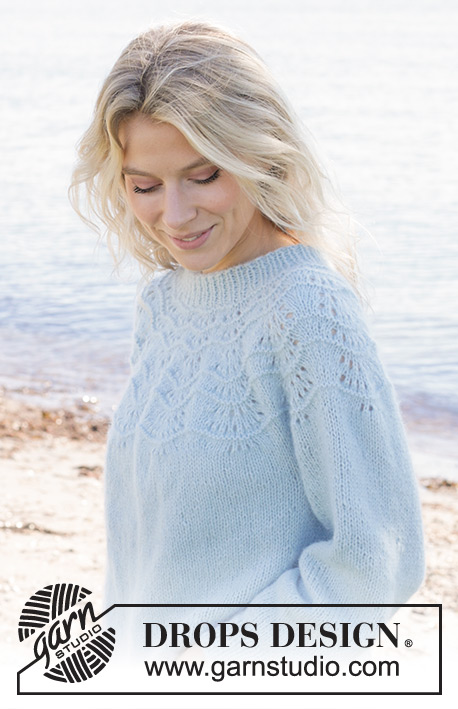 |
||||||||||||
Knitted jumper in DROPS Air. Piece is knitted top down with wave pattern and round yoke. Size: S - XXXL
DROPS 239-8 |
|||||||||||||
|
---------------------------------------------------------- EXPLANATION FOR THE PATTERN: ---------------------------------------------------------- GARTER STITCH (back and forth): Knit all rows. 1 ridge vertically = knit 2 rows. PATTERN: See diagrams A.1 to A.3. DECREASE TIP (applies to sleeves): Decrease 1 stitch on each side of marker thread as follows: Work until 3 stitches remain before marker thread and knit 2 together, knit 2 (marker thread is between these 2 stitches), slip 1 stitch knitwise, knit 1, pass slipped stitch over stitch worked. ---------------------------------------------------------- START THE PIECE HERE: ---------------------------------------------------------- JUMPER - SHORT OVERVIEW OF THE PIECE: Work double neck edge and yoke in the round on circular needle from mid back, top down. Now divide yoke for body and sleeves. Work the body in the round on circular needle. Work sleeves in the round on double pointed needles/a short circular needle. DOUBLE NECK EDGE: Cast on 88-92-94-100-104-110 stitches with DROPS Air over a short circular needle size 5 and a short circular needle size 4 mm held together. Pull out short circular needle 5 mm and keep stitches on the short circular needle size 4 mm (cast is done like this to get an elastic cast-on edge). Knit 1 round. Then work rib (= knit 1/purl 1) for 4 cm. Purl 1 round over all stitches, then work rib as before until piece measures 8 cm. Insert 1 marker in middle of round. Work yoke as explained below. Measure yoke from this marker. YOKE: Switch to circular needle size 5 mm. Knit 1 round while increasing 3-6-11-19-22-23 stitches evenly = 91-98-105-119-126-133 stitches. Purl 1 round. Work A.1 13-14-15-17-18-19 times in total in the round on body. REMEMBER THE KNITTING TENSION! When A.1 has been worked 1 time vertically, work A.2 0-0-1-1-2-2 times in total vertically, then work A.3. When A.3 has been worked 1 time vertically, there are 247-266-285-323-342-361 stitches on needle. Knit 1 round while increasing 7-8-5-3-0-1 stitches evenly = 254-274-290-326-342-362 stitches. Work in stocking stitch until piece measures 20-22-24-26-28-30 cm from marker. On next round divide piece for body and sleeves as follows: DIVIDE THE PIECE FOR BODY AND SLEEVES AS FOLLOWS: Work 37-41-43-48-52-56 stitches as before (half back piece), slip the next 52-54-58-66-66-68 stitches on a thread for sleeve, cast on 6-6-8-8-10-12 new stitches on needle (in the side under sleeve), work 75-83-87-97-105-113 stitches in stocking stitch (front piece), slip the next 52-54-58-66-66-68 stitches on a thread for sleeve, cast on 6-6-8-8-10-12 new stitches on needle (in the side under sleeve), and work the last 38-42-44-49-53-57 stitches as before (half back piece). Finish body and sleeves separately. Now measure piece from here! BODY: = 162-178-190-210-230-250 stitches. Insert a marker thread in each side, in the , middle of the 6-6-8-8-10-12 new stitches (used when dividing for vents). Begin round at one of the marker threads and work stocking stitch until piece measures 22 cm from division. Now divide piece for vents in each side. Keep the first 81-89-95-105-115-125 stitches on the needle. Slip the remaining stitches on a thread. BACK PIECE: = 81-89-95-105-115-125 stitches. Knit 1 row from right side while increasing 18-18-20-22-24-26 stitches evenly = 99-107-115-127-139-151 stitches. Switch to circular needle size 4 mm and work rib as follows (work first row from wrong side): ROW 1 (= wrong side): Work 2 stitches in GARTER STITCH - read explanation above, * purl 1, knit 1 *, work from *-* until 3 stitches remain, purl 1 and 2 stitches in garter stitch. Work rib like this for 8 cm. Jumper measures approx. 54-56-58-60-62-64 cm from shoulder and down. Loosely cast off. FRONT PIECE: Slip the 81-89-95-105-115-125 stitches from thread on circular needle size 5 mm. Work as on back piece. SLEEVES: Slip the 52-54-58-66-66-68 stitches from thread in one side of piece on double pointed needles or a short circular needle size 5 mm and pick in addition up 1 stitch in each of the 6-6-8-8-10-12 new stitches cast on under sleeve = 58-60-66-74-76-80 stitches. Insert 1 marker thread mid under sleeve – in the middle of the 6-6-8-8-10-12 stitches that were cast on under sleeve. Begin round at the marker thread and work stocking stitch in the round. When piece measures 3-3-3-2-2-2 cm, decrease 2 stitches mid under sleeve - read DECREASE TIP. Decrease like this every 4-4-2½-2-2-1½ cm 4-4-6-9-9-10 times in total = 50-52-54-56-58-60 stitches. Work until sleeve measures 36-34-33-31-29-28 cm from division. 8 cm remain until finished measurements. Try the jumper and work to desired length before rib. Knit 1 round while increasing 10-10-10-12-12-12 stitches evenly = 60-62-64-68-70-72 stitches. Switch to double pointed needles size 4 mm. Work rib (knit 1/purl 1) for 8 cm. Cast off somewhat loosely by knitting. Sleeve measures approx. 44-42-41-39-37-36 cm. Work the other sleeve the same way. ASSEMBLY: Fold the neck down inside the garment, and fasten with 1 stitch in each side of the neck towards the shoulders. |
|||||||||||||
Diagram explanations |
|||||||||||||
|
|||||||||||||
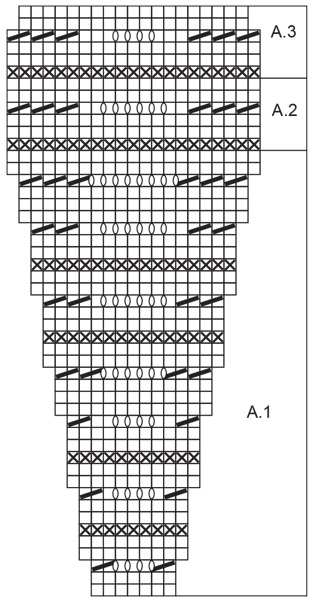 |
|||||||||||||
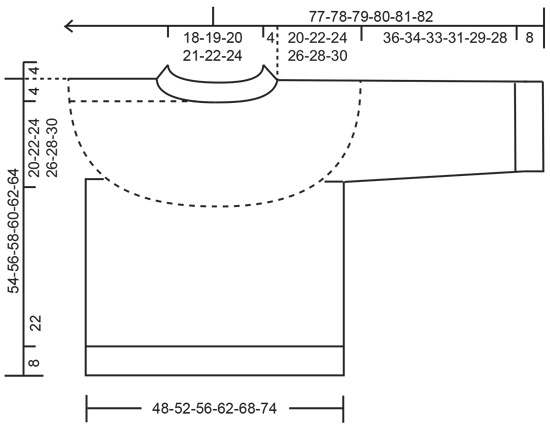 |
|||||||||||||
Have you finished this pattern?Tag your pictures with #dropspattern #tidaltreasuressweater or submit them to the #dropsfan gallery. Do you need help with this pattern?You'll find 30 tutorial videos, a Comments/Questions area and more by visiting the pattern on garnstudio.com. © 1982-2025 DROPS Design A/S. We reserve all rights. This document, including all its sub-sections, has copyrights. Read more about what you can do with our patterns at the bottom of each pattern on our site. |
|||||||||||||







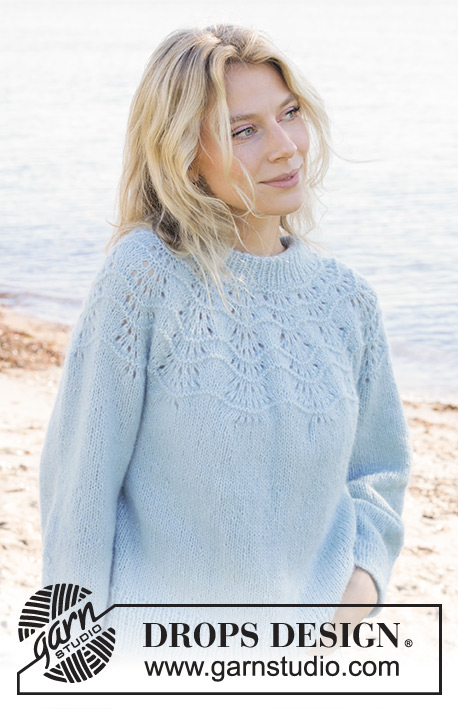
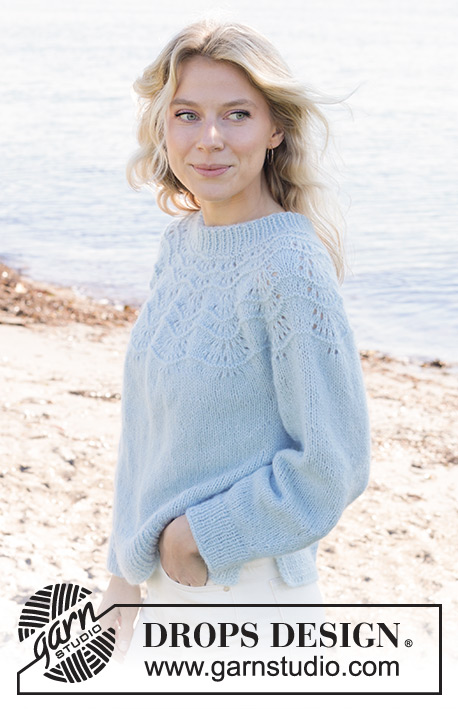


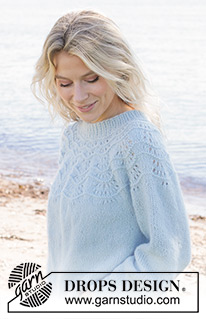
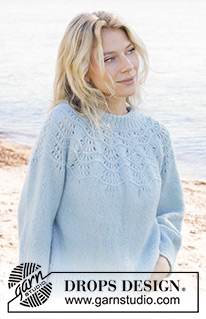
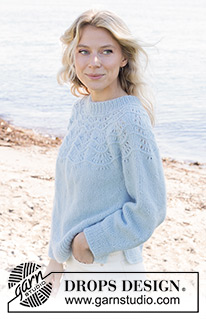
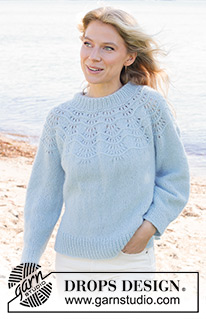
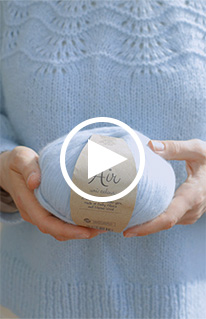

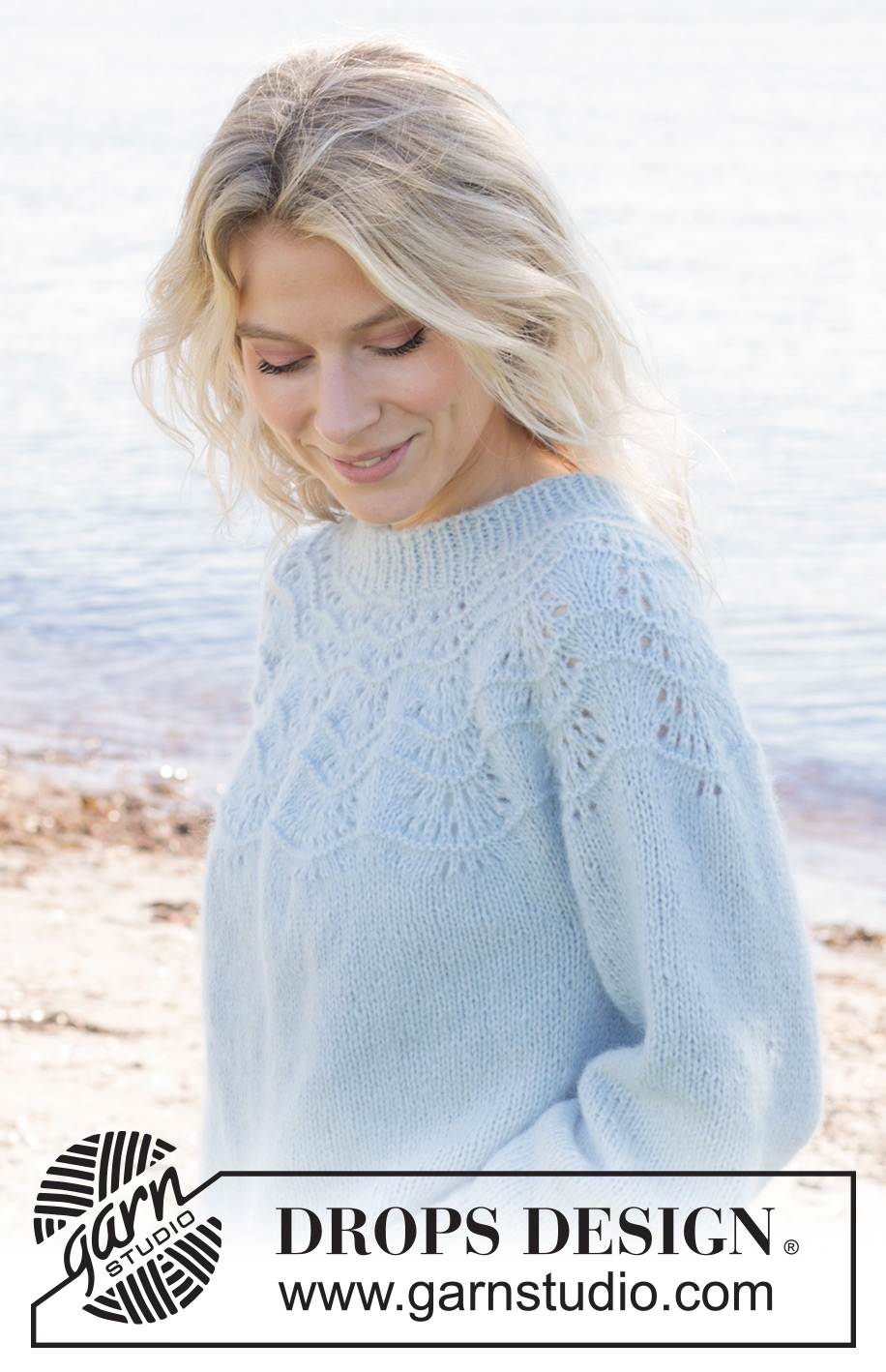
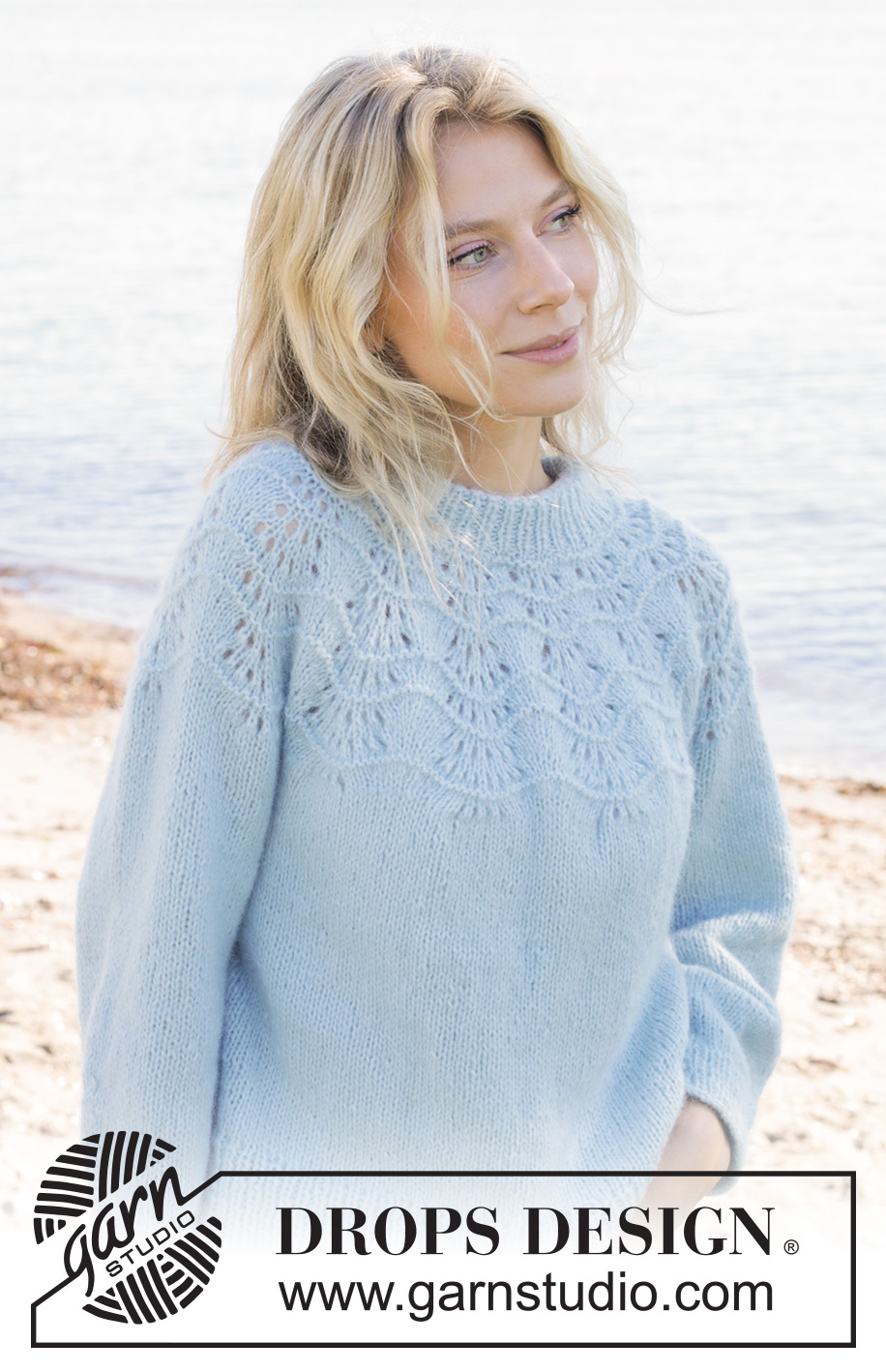
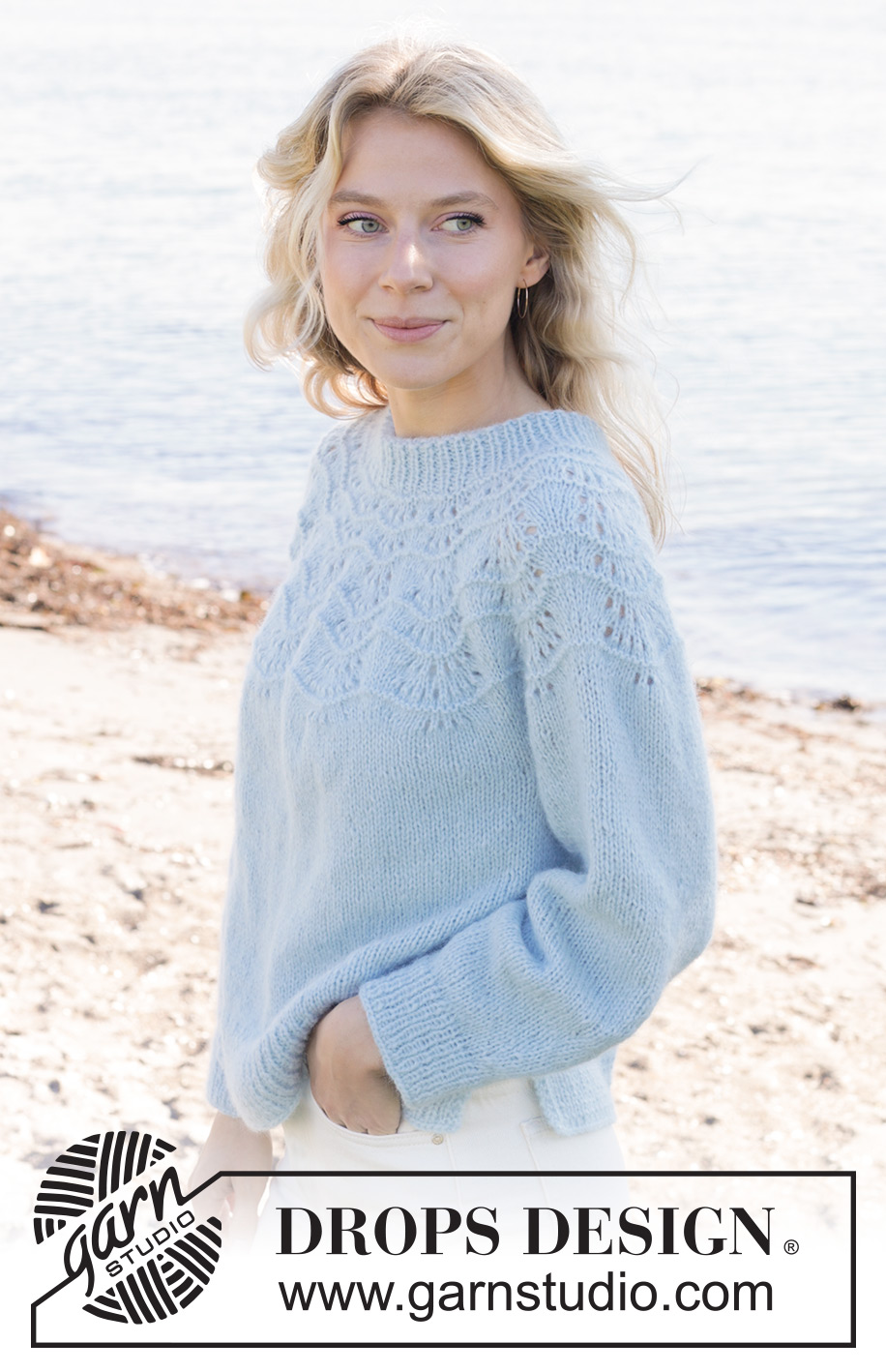
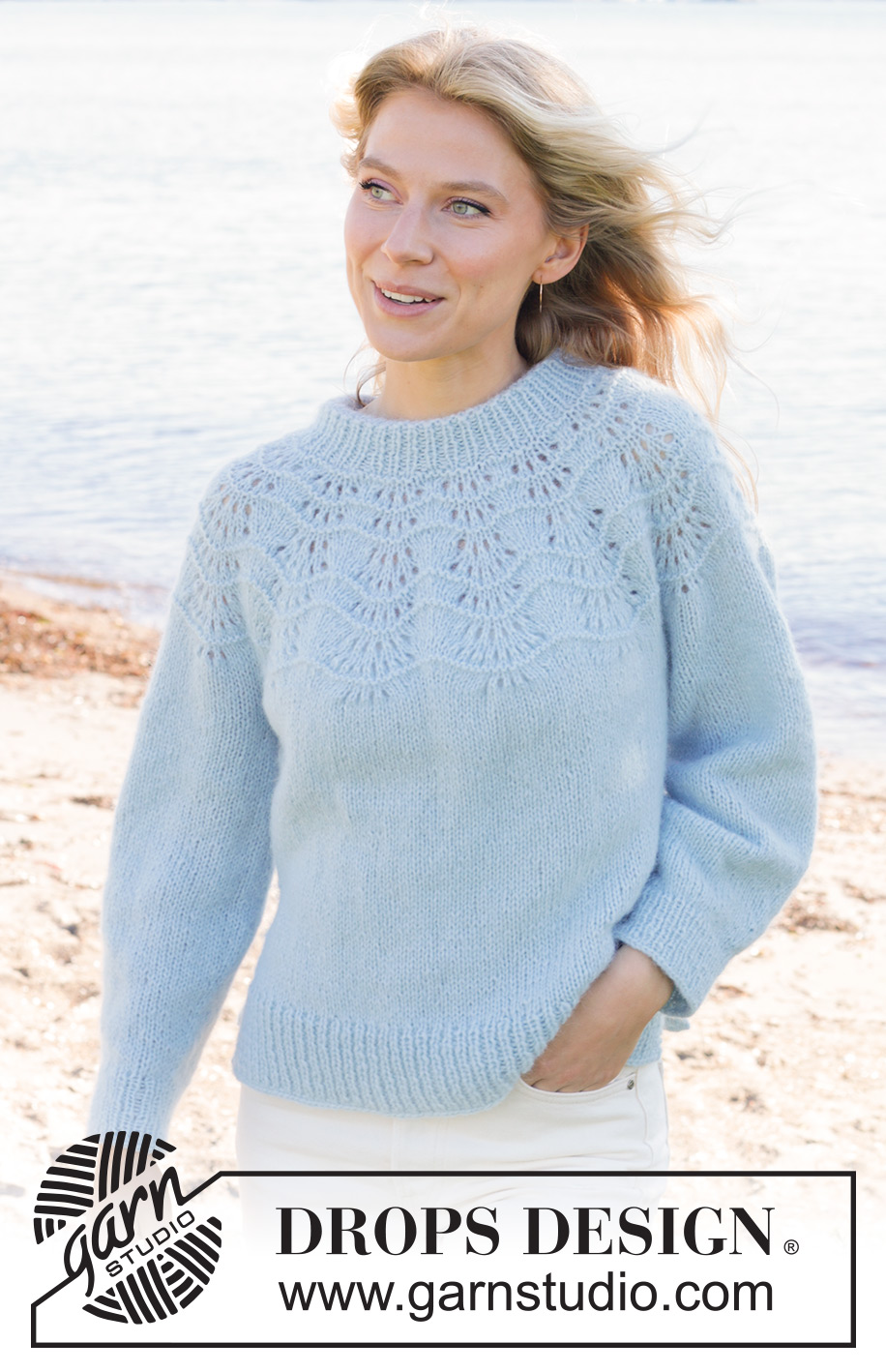

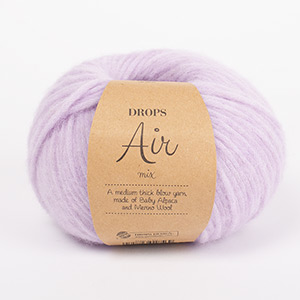
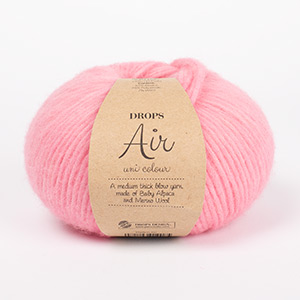

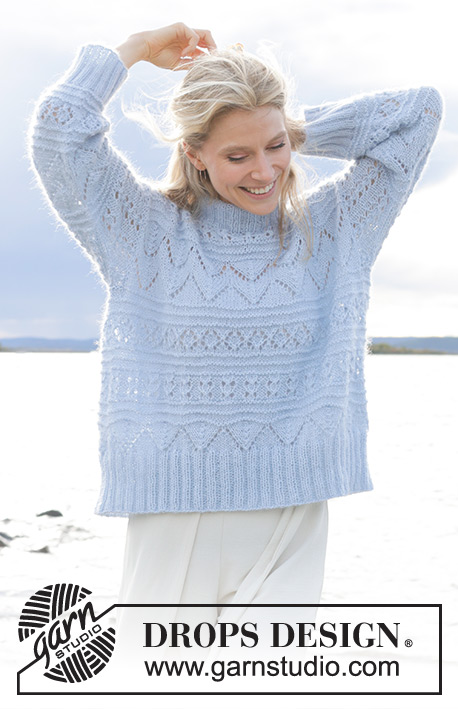


















































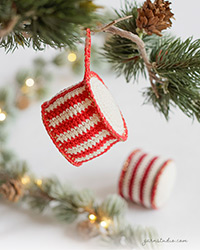





Post a comment to pattern DROPS 239-8
We would love to hear what you have to say about this pattern!
If you want to leave a question, please make sure you select the correct category in the form below, to speed up the answering process. Required fields are marked *.